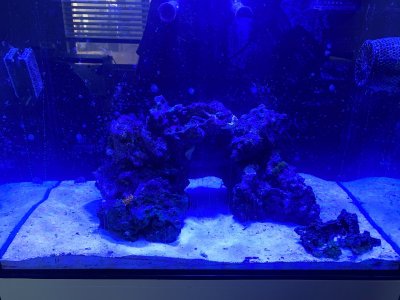- Joined
- Sep 12, 2019
- Messages
- 785
- Reaction score
- 517
I just moved my tank (JBJ 45) from my living room downstairs to my office upstairs. With that, I took out some live rock to rescape it, cleaned the back chambers, siphoned the sand, etc. changed about 50 % of the water. I did a water test and noticed that my ammonia is about 0.75. Am I going through a mini cycle? I just have snails and nems in the tank at the moment.
What are the best next steps? I can add a bottle of Biospira bac but I already have the live rock that was in the tank for a year in there plus ceramic rings and a bag of matrix. Should I just get some Seachem prime to bring it down for the inhabitants?
What are the best next steps? I can add a bottle of Biospira bac but I already have the live rock that was in the tank for a year in there plus ceramic rings and a bag of matrix. Should I just get some Seachem prime to bring it down for the inhabitants?
















